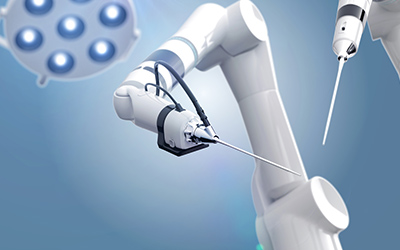Computer-assisted Surgery

Computer-assisted surgery is an extremely useful tool for aiding the veterinarians to perform minimally invasive joint replacements and fracture repairs for injuries to the joints and ligaments including tears, ruptures, sprains and trauma in animals. Dr. Pozzi uses computer-assisted surgery for deformity correction and spinal surgery in canines like cats and dogs. It provides utmost accuracy avoiding any human errors. Navigation offers real-time visual information which helps in accurate bone cuts, implant positioning, balancing the ligament, and final alignment of the limb.
Dr. Antonio Pozzi is a top veterinary doctor in Zurich. He provides treatment for small animals more specifically cats and dogs. His clinical interests include meniscus pathology and treatment, arthroscopy, biological fracture fixation and total joint replacement. Dr. Pozzi provides specialized pet care during and after surgery.
Computer-assisted Deformity Correction
Dr. Antonio Pozzi is a top veterinary doctor in Zurich. He uses computer-assistance for deformity correction in cats and dogs. Dr. Pozzi collects CT data and radiographs to generate 3D reconstructions of the deformed limbs. To begin the surgery, Dr. Pozzi administers general anaesthesia by placing the canine in a suitable position followed by small incisions in the deformed limb. Computer assistance provides real-time imaging of the deformed limb and surgical instruments during surgery. Data for the images are provided by infrared sensors fixed to the bones of the joint and the surgical instruments. Their position is tracked by an infrared camera situated above the surgical table linked to the computer and guides the surgeon’s progress. Once the surgery is completed, the incision is closed with a sterile dressing and sutures.
Contact Dr. Pozzi’s office for to know more about computer-assisted deformity correction.
Computer-assisted Spinal Surgery
Dr. Antonio Pozzi is a top veterinary doctor in Zurich. He uses computer-assistance for spinal surgery in cats and dogs. Dr. Pozzi collects CT data and radiographs to generate 3D reconstructions of the spinal deformity. To begin the surgery, Dr. Pozzi administers general anaesthesia by placing the canine in a suitable position followed by small incisions in the
targeted section of the spine and removes the skin and underlying tissues to reveal the spine. Computer assistance provides real-time imaging of the spinal deformity and surgical instruments during surgery. Data for the images are provided by infrared sensors fixed to the bones of the spine and the surgical instruments. Their position is tracked by an infrared camera situated above the surgical table linked to the computer and guides the surgeon’s progress. Once the surgery is completed, the incision is closed with a sterile dressing and sutures. Contact Dr. Pozzi’s office for to know more about computer-assisted spinal surgery.
Fluoroscopic Assessment
Dr. Antonio Pozzi is a top veterinary doctor in Zurich. He uses fluoroscopy as an imaging tool for computer-assisted surgery in cats and dogs. During the procedure, any metal accessories or clothing that may interfere with imaging are removed from the canine. A contrast substance is injected to enhance imaging and the canine is positioned appropriately to examine the body part of concern. Special position sensors are placed on the surgical tools, the canine, and the fluoroscope to track their position in space. The fluoroscope is attached to a monitor screen which helps develop real time images of the body parts or the instruments. Fluoroscopic assessment guides the veterinarian while performing operations like arthroscopy, fracture fixation, meniscus repair, spine surgery and deformity correction. Contact Dr. Pozzi’s office for to know more about fluoroscopic assessment.




